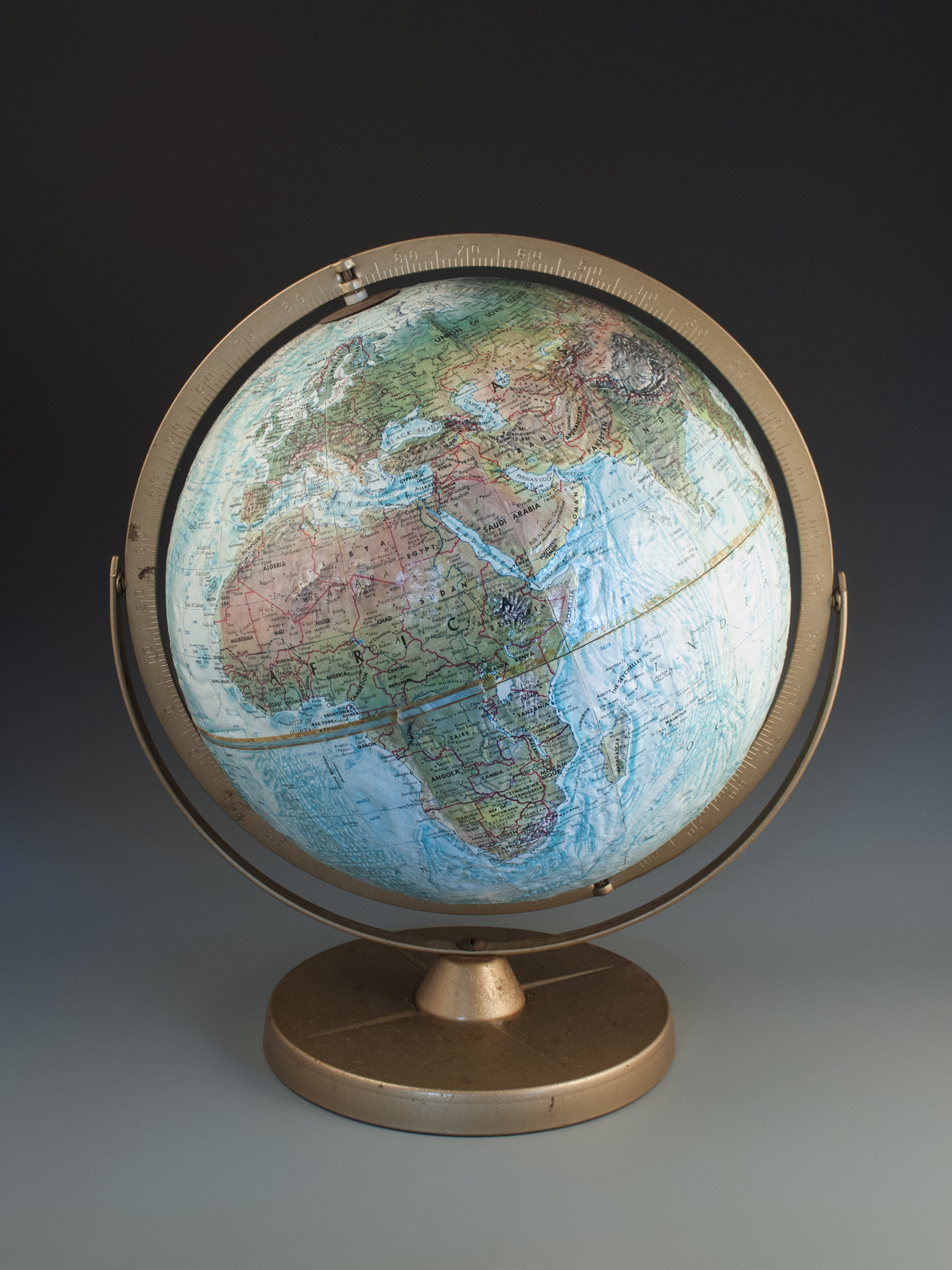World Globe
Santa Barbara, 1981

There was a restless gap between my first trip to Nepal in 1979 and my Rotary Fellowship return to Kathmandu in 1983. During that hiatus, working as a writer, editor, and artist in Santa Barbara, Nepal became an obsession. Getting back to that chaotic Hindu kingdom was all I could think about. Sometimes, the inland peaks of the Santa Ynez range would fool my eye and appear, for an instant, like the Himalaya. Whenever that happened, my heart skipped a beat.
During my 1979 visit to Nepal I’d become fascinated with the ingenious prayer technology invented by Tibetan Buddhists. Prayer flags stampeded on long lines in the wind, sending their mantras heavenward; prayer wheels packed with blessings were spun by hand, clockwise, on the pilgrimage paths circling temples and shrines. Larger prayer wheels were anchored in streams, animated by water power. The prayers within were always the same. Om Mani Padme Hun: the Jewel in the Heart of the Lotus.
[symbol.png]
In 1982 I had what I thought was a genius idea: turn a world globe into a prayer wheel. The concept of using the Earth’s own rotation as a force of spiritual good was entrancing. I traced out the Tibetan invocation, planning to paint it onto a world globe I’d found at Goodwill.
But there was one problem: the direction of the planet’s spin. Viewed from the customary orientation, with the North Pole on top, the Earth turns to the right: counterclockwise. Prayer wheels, though, must always spin clockwise. This led me to wonder: From a Buddhist perspective, could our long-held model of the Earth’s position in space be upside down?
Imagine the implications of correcting that Eurocentric error. What if we simply inverted our world view, turned over our maps, and placed Antarctica at the top of the world? Maybe humanity’s dysfunctional relationship with our home planet would also reverse. Maybe, at last, we’d have a prayer.
